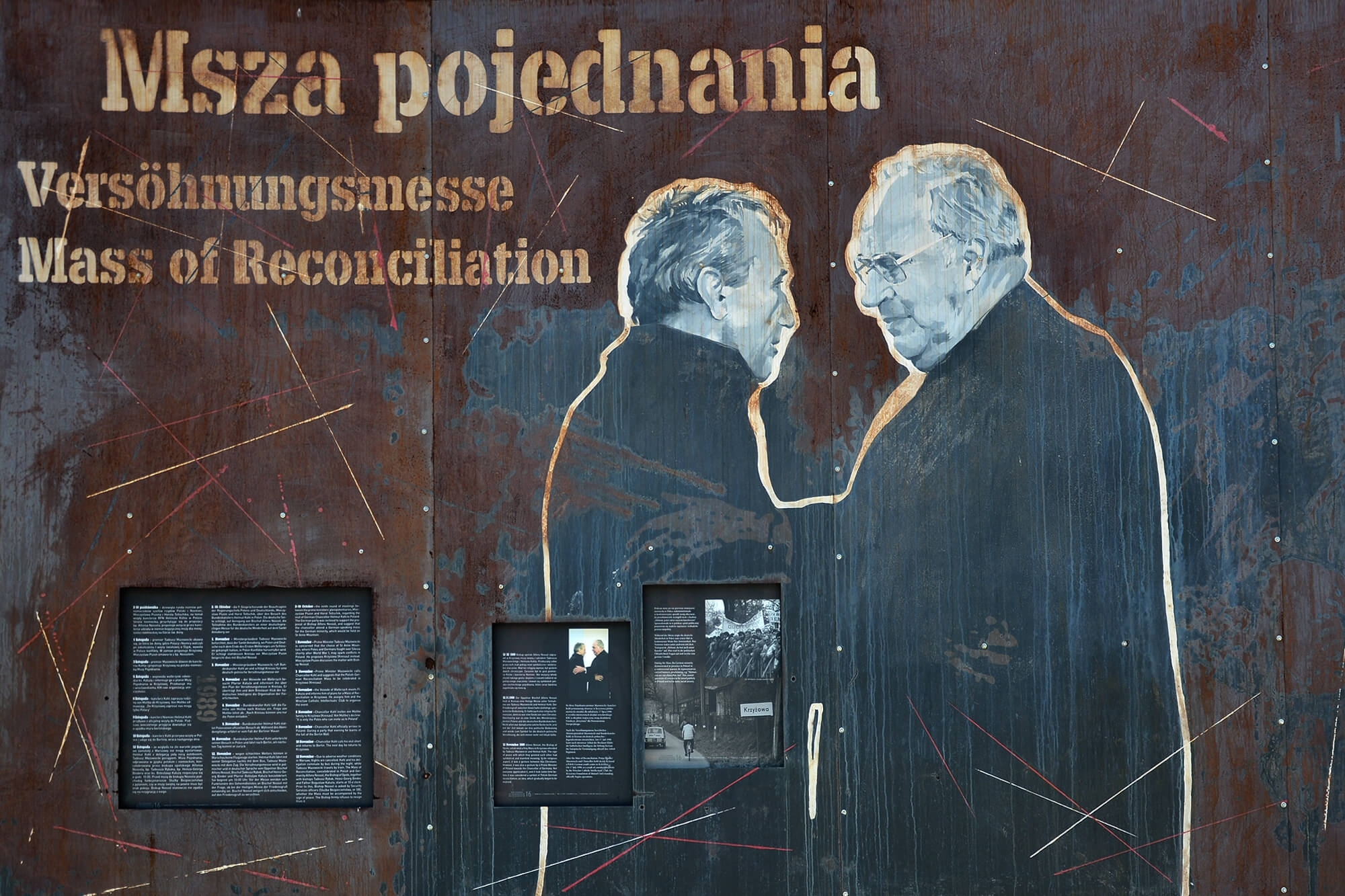Courage and
reconciliation
-
What is the sign of peace? Why was a mass celebrated?
The sign of peace follows in a catholic mass the priest’s invitation to offer each other a sign of peace: in Germany usually a shaking of hands, in Poland a bow. The heads of the Polish and German governments Tadeusz Mazowiecki and Helmut Kohl decided for the strong gesture to embrace each other during the mass. This picture of them embracing each other became the symbol of the German-Polish reconciliation that they wished for. Political issues, such as the question about reparations for the forced labourers and the issue of the Poland’s western border, were put aside and they concentrated on establishing a common basis of trust. Kohl and Mazowiecki were able to find this common ground through their connecting religion – both were Catholics. The celebration of the reconciliation mass enabled them to having a new sense of togetherness aside from daily political agendas.
-
Why was the mass of reconciliation celebrated in Krzyżowa?
In contrast to Saint Annaberg where the mass was planned to be celebrated at first, the history of Krzyżowa is not connected with German-Polish conflicts. Krzyżowa represented a “different Germany”, which resisted National Socialism. Tadeusz Mazowiecki already heard about the Kreisau Circle, when he saw himself confronted with the topic of the German resistance in the 1970s. The group was also well known to Helmut Kohl - he even was friends with Eugen Gerstenmaier, which means Kreisau had a positive connotation for both of them.
-
The appearance of the German minority during the mass of reconciliation
In the 1980s there were still a couple of hundred thousand people who felt that they belonged to the German minority. Most of them lived in Upper Silesia. But until 1989 the German minority in Poland was “invisible” because officially there were no minorities in Poland. Until the transformation, the members of the German minority were not allowed to organize themselves in associations.
About 6000 people had come to the reconciliation mass, among them many people from Upper Silesia. Some had brought banners and posters on which they greeted Chancellor Kohl. There were significantly more German posters than Polish ones. Due to television broadcasts the German minority became visible all over Poland for the first time. One banner even said: “Helmut, you are our chancellor, too”, which could be misunderstood as a revisionist statement regarding the discussions about the recognition of Poland´s western border.



